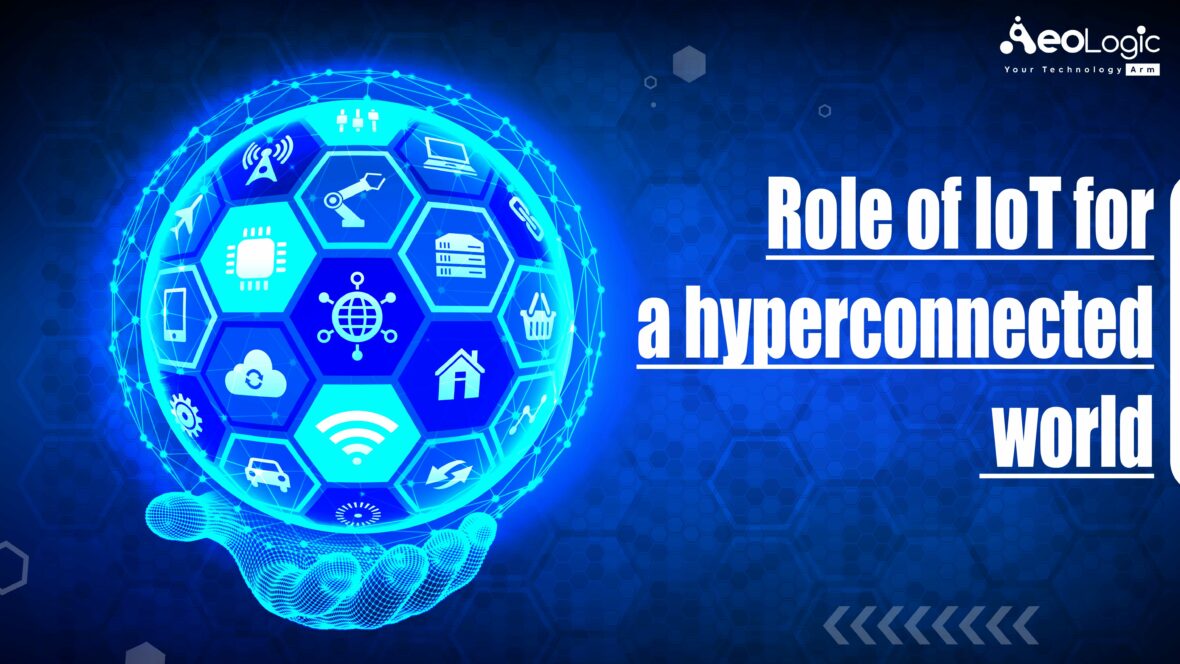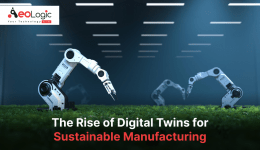Technology is bringing about a convergence in the physical and digital world with improved connectivity. This has been made probable by the combined integration of software, hardware, and the Internet. This blog will discuss the role of IoT in a hyperconnected world. The Internet of Things (IoT) has the capability to transform our living spaces and make science fiction seem real. The vast collection of possibilities involving the use of IoT devices includes surgeries conducted by robots, drone deliveries of online orders, remote monitoring of devices, or driving driverless cars, among others.
With the powerful pandemic limiting human interaction, enterprises are looking at innovative ways to install IoT-based solutions and garner superior user experiences. Statistically stated, the number of IoT devices in the world has been put at an enormous 20 billion, which is likely to touch 43 billion by the year 2023, as per a McKinsey report. Since the implementation of smart cities shall be underpinned by the optimal performance of IoT devices, there is a need to be a stringent installation of IoT quality assurance.
Also read: Best Ways to Maximize the Benefits of Hyper Automation
What is the role of IoT in a hyperconnected world?
The role of IoT in a hyperconnected world helps in connecting a whole ecosystem to the internet. This ecosystem may be comprised of people, processes, devices, and data, and is geared to offer superior user experiences. Furthermore, IoT is aiming at exploring new opportunities, providing richer experiences, creating new capabilities, and accomplishing economic success. Since IoT is about the sharing of information in real-time, any performance-related issue in one part of the ecosystem can unfavorably impact the other as well.
Get in touch with us to know more about IoT Solutions!
Today, when cybercrime is raising its tentacles and posing severe challenges to enterprises, compromising one node of the IoT network can cripple other nodes also. Moreover, should cybercriminals get control of the IoT network they can result in a data breach. Or even, gain control of secured databases. It is only by observing stringent IoT quality assurance that such networks can be monitored for vulnerabilities. And then validated by integrating countermeasures to pre-empt cybercrime.

Factors Driving the Success of IoT Applications
Since the IoT ecosystem is mostly divided into multiple platforms, devices, and networks, its frictionless performance can be ensured by considering a few factors.
- Establishing reliable connectivity of IoT devices with embedded sensors, cloud, and other elements
- Ensuring the IoT network is compliant with global regulations and safety protocols
- The IoT network works smoothly with other interconnected devices
- Data generated and transmitted over the IoT network should be secured against malware and other threat factors
Why IoT Testing in a Hyperconnected World?
The role of IoT in a hyperconnected world, devices, people, networks, and processes stay connected to get a unified experience for everyone. It is only by taking a robust IoT device testing method that the following results can be ensured:
- Compliance: The several different devices forming part of the IoT ecosystem may come with different configurations and are subject to various security or regulatory protocols. Such as ISO 27001, PCI DSS, and HIPAA, among others. It is only by following a stringent IoT testing methodology that devices are present within the ecosystem that can be made compliant with international regulations.
- Cybersecurity: IoT security testing helps in identifying any inherent security vulnerabilities in the IoT network. And also, helps in safeguarding it from malicious threat actors. The identified risks or vulnerabilities are then eliminated.
- Data integrity: Since the IoT network comprising numerous devices may contain (and transmit) sensitive personal, business, or financial data, it can be retrieved by cybercriminals leading to data fudging. IoT quality assurance can recognize the tell-tale signs of any cyber-attack. And therefore, it is ensuring the integrity of data.
- Performance: IoT devices should be able to carry enormous data loads during high traffic volume. If the configuration and data transfer thresholds of such devices are not scaled, the performance of such devices is going to take an upper level. The overwhelming of IoT network can be presenting issues such as latency, system crashes, or downtime.
- Connectivity: The optimal performance of any IoT-based devices or network can only be assured if the interconnection between databases, devices, embedded sensors, and the cloud is protected and established. And with the help of IoT testing, any constraints in accomplishing such interconnection are addressed.
Also read: Why the Internet of Things Needs 5G Connectivity
Conclusion
The role of IoT in a hyperconnected world is very imperative. With increasing automation and innovation, any IoT ecosystem is probably delivering the projected outcomes. However, things can go south if attributes like compatibility, compliance, cost-effectiveness, and security are not monitored beforehand by testing IoT applications. Furthermore, in the Agile-DevOps setup where the testing period is lessening and interdisciplinary collaboration rising. IoT testing in the shift-left mold can drive toward the early identification and fixing of flaws.
Get in touch with us to know more about IoT Solutions.
Connect with us to schedule your 60-minute free consultation.
FAQs
What do you mean by hyperconnectivity in IoT?
Hyperconnectivity is presently used to define the connectivity that stays in the digital landscape. And the interaction between information systems, data, and devices. Where all of them are related to each other through the internet.
How IoT is connected to the world?
The Internet of things (IoT) is referring to the ability of everyday objects. In order to connect to the internet and exchange information. IoT network is providing an interconnected environment. Where objects are having a digital presence and can communicate with other objects and people.
.






